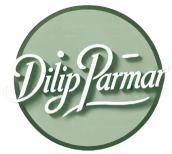As a long-time WordPress developer transitioning into Laravel, you might find yourself asking: “What exactly are Blade components and slots? And why do they sound so confusing?” Don’t worry — you’re not alone.
This post is designed specifically for WordPress developers to explain Laravel Blade components and slots by comparing them to familiar WordPress concepts, especially shortcodes.
📦 What are Blade Components?
In Laravel, Blade components are reusable UI blocks — just like how in WordPress you’d create a shortcode to insert a button, alert box, or card into your content.
A Blade component consists of:
- A class file that holds the logic (like your
functions.phpcode for a shortcode). - A Blade view file that holds the HTML (like the HTML output inside your shortcode callback).
Example: Alert Box Component
You can generate a new component in Laravel like this:
artisan make:component Alert
This will create:
app/View/Components/Alert.php— component logic (like shortcode function).resources/views/components/alert.blade.php— component template (like shortcode HTML).
🕹️ Example: Alert Box (WordPress vs Laravel)
In WordPress (Shortcode)
function wp_custom_alert_shortcode($atts, $content = null) {
$atts = shortcode_atts(['type' => 'info'], $atts);
return '<div class="alert alert-' . esc_attr($atts['type']) . '">' . esc_html($content) . '</div>';
}
add_shortcode('custom_alert', 'wp_custom_alert_shortcode');
Usage:
[custom_alert type="warning"]This is a warning![/custom_alert]
Output:
<div class="alert alert-warning">This is a warning!</div>
In Laravel (Blade Component)
app/View/Components/Alert.php
namespace App\View\Components;
use Illuminate\View\Component;
class Alert extends Component
{
public $type;
public function __construct($type = 'info')
{
$this->type = $type;
}
public function render()
{
return view('components.alert');
}
}
resources/views/components/alert.blade.php
<div class="alert alert-{{ $type }}">
{{ $slot }} {{-- This is the slot where the content goes --}}
</div>
Usage in Blade Template
<x-alert type="warning">
This is a warning!
</x-alert>
Output
<div class="alert alert-warning">This is a warning!</div>
✨ Key Point:
The content inside the component tags (This is a warning!) is automatically passed into the default slot ({{ $slot }}).
🧩 What are Slots in Laravel Blade?
Slots are placeholders inside a Blade component where you can inject custom content when using the component. Slots are the Laravel equivalent of the content between WordPress shortcode tags.
- Default Slot: Main content.
- Named Slots: Custom sections like headers or footers.
🧩 Example: Card with Header and Footer
WordPress (Nested Shortcodes)
[custom_card]
[header]My Card Header[/header]
This is the main content.
[footer]My Card Footer[/footer]
[/custom_card]
Implementing this in WordPress is complex, requiring nested shortcode parsing, which can break easily.
Laravel (Blade Component with Named Slots)
resources/views/components/card.blade.php
<div class="card">
<div class="card-header">{{ $header ?? '' }}</div>
<div class="card-body">{{ $slot }}</div>
<div class="card-footer">{{ $footer ?? '' }}</div>
</div>
Usage in Blade Template
<x-card>
<x-slot name="header">My Card Header</x-slot>
This is the main content.
<x-slot name="footer">My Card Footer</x-slot>
</x-card>
Output
<div class="card">
<div class="card-header">My Card Header</div>
<div class="card-body">This is the main content.</div>
<div class="card-footer">My Card Footer</div>
</div>
✨ Named slots (like header and footer) make it easy to pass custom sections into your components — no messy parsing required.
🔄 Direct Comparison: WordPress vs Laravel Blade
| Feature | WordPress Shortcode | Laravel Blade Component |
|---|---|---|
| Reusable Block | Shortcode | Blade Component |
| Data Passed In | Shortcode Attributes | Component Attributes |
| Main Content | $content | Default Slot ({{ $slot }}) |
| Multiple Sections | Nested Shortcodes (Hard) | Named Slots (Easy) |
| Example | [custom_alert type="warning"]Content[/custom_alert] | <x-alert type="warning">Content</x-alert> |
✅ Why Laravel Blade is Better for Reusable Blocks
| Issue | WordPress Shortcodes | Laravel Blade Components |
|---|---|---|
| Structure | Function + HTML mixed | Class + Blade View (separate logic & HTML) |
| Attributes | Manually handled via shortcode_atts() | Passed directly to constructor |
| Nested Sections | Requires fragile parsing | Named slots are built-in |
| Readability | PHP+HTML mixed | Clean Blade syntax |
| Reuse | Only in content editor | Anywhere in views, emails, etc. |
📣 Final Thoughts
For WordPress developers learning Laravel, Blade components and slots are a game changer. They provide:
- Cleaner separation of logic and presentation.
- Simpler handling of nested content.
- Built-in support for passing data.
Once you understand how slots work, you’ll realize they solve many of the headaches you experienced with shortcodes — especially around nested layouts and content sections.
🧰 Handy Reference
| Term | Meaning |
|---|---|
| Component | Reusable UI block (like a shortcode) |
| Attribute | Data passed to the component (like shortcode attributes) |
| Default Slot | Main content inside the component |
| Named Slot | Custom content sections like headers or footers |
